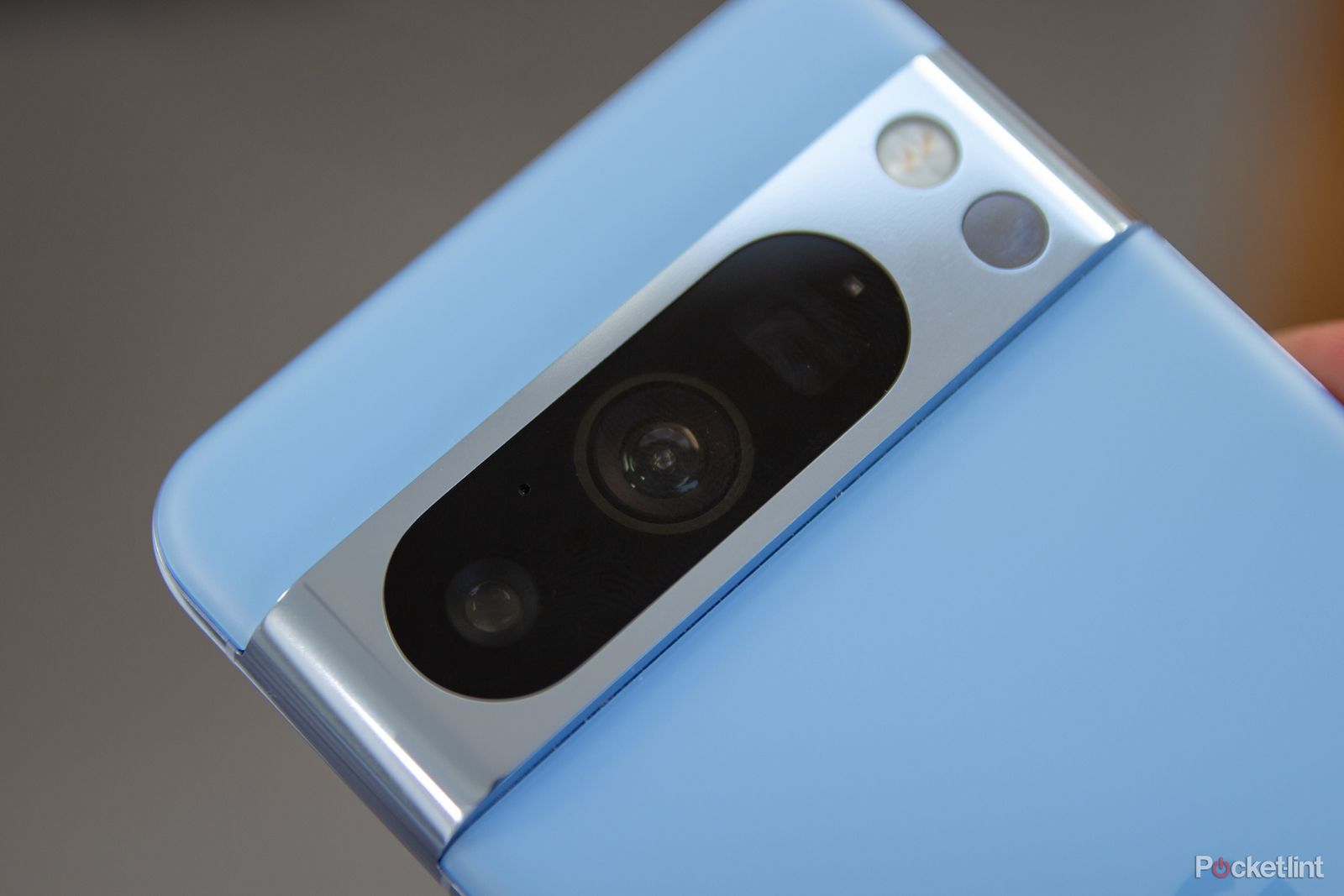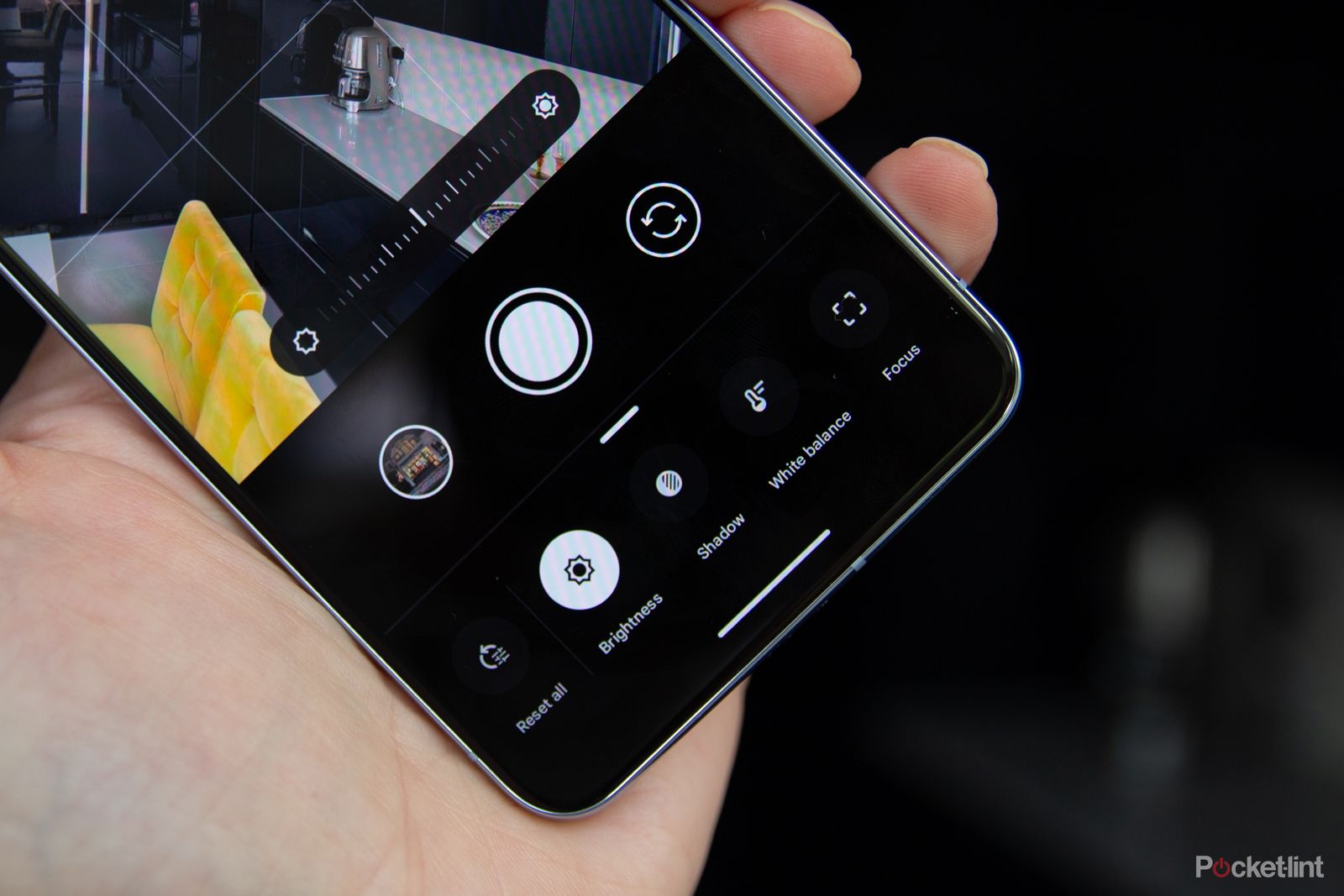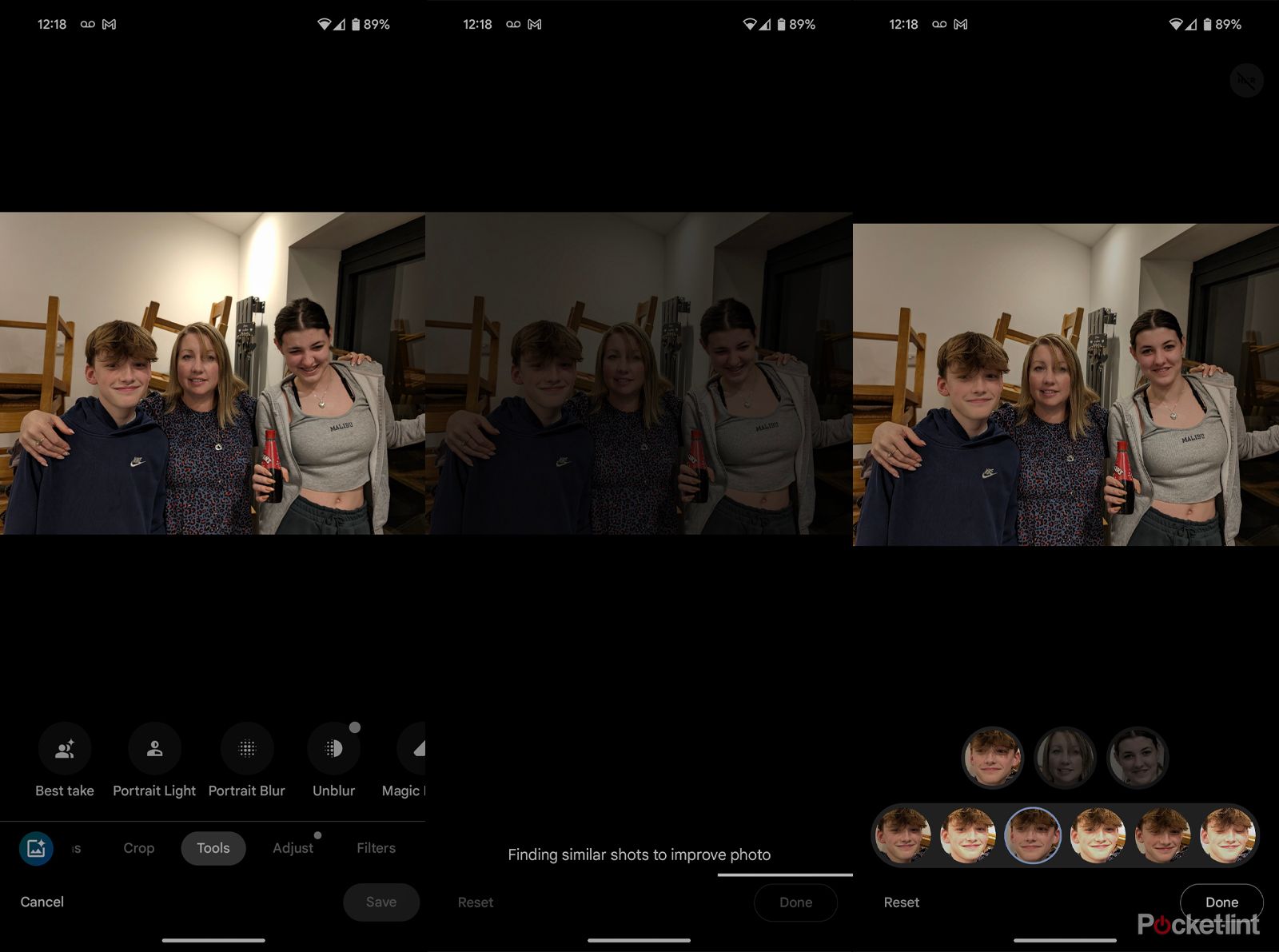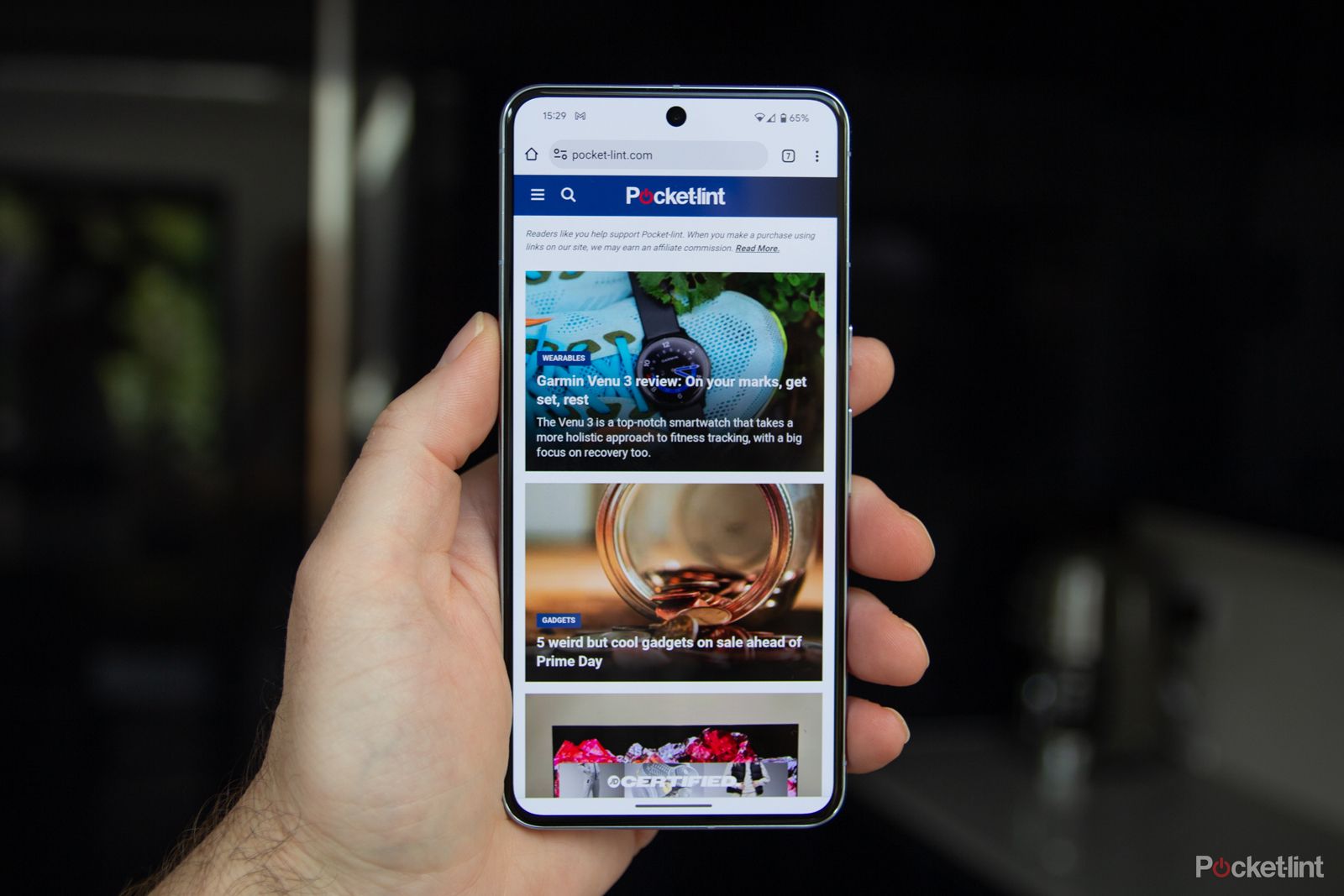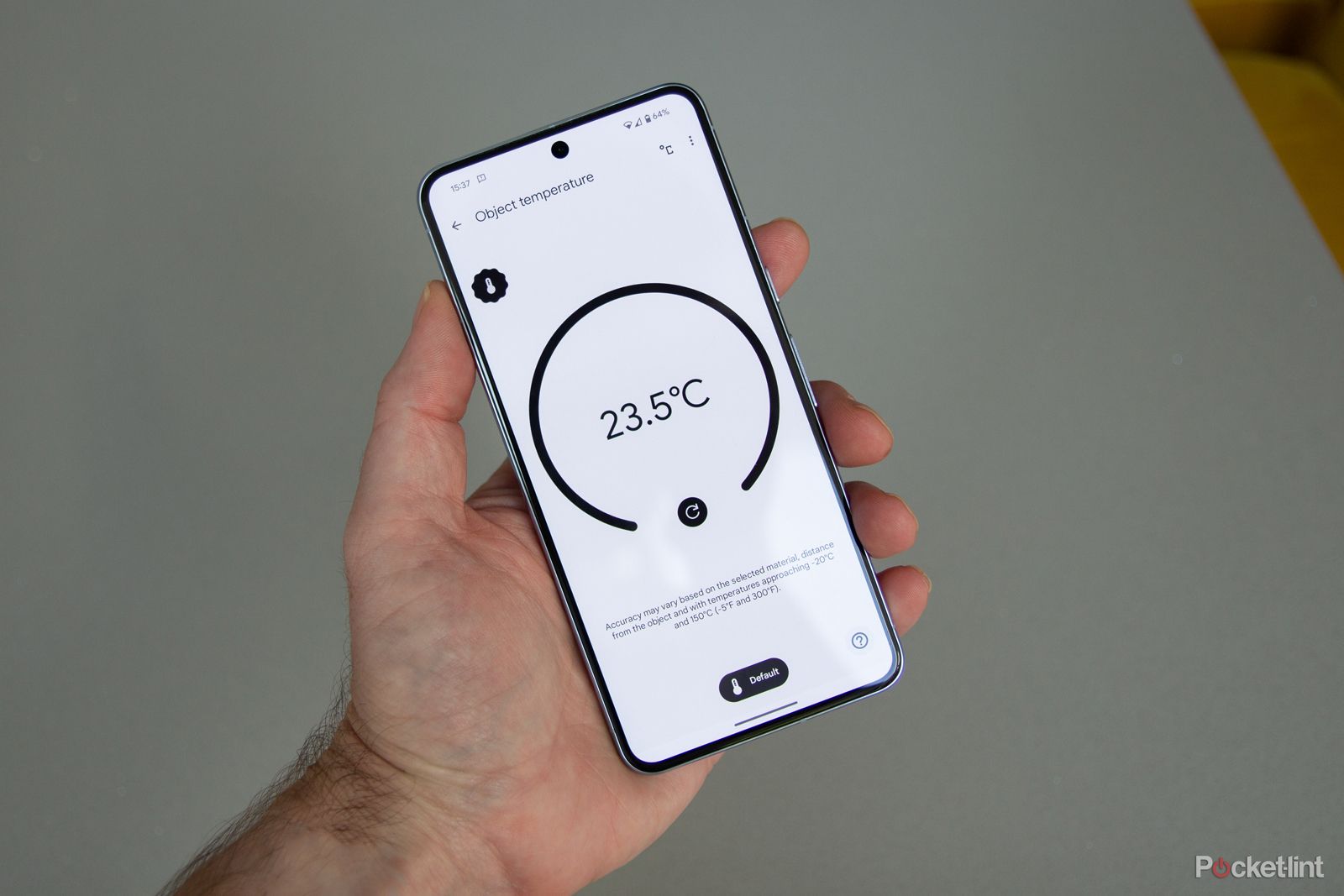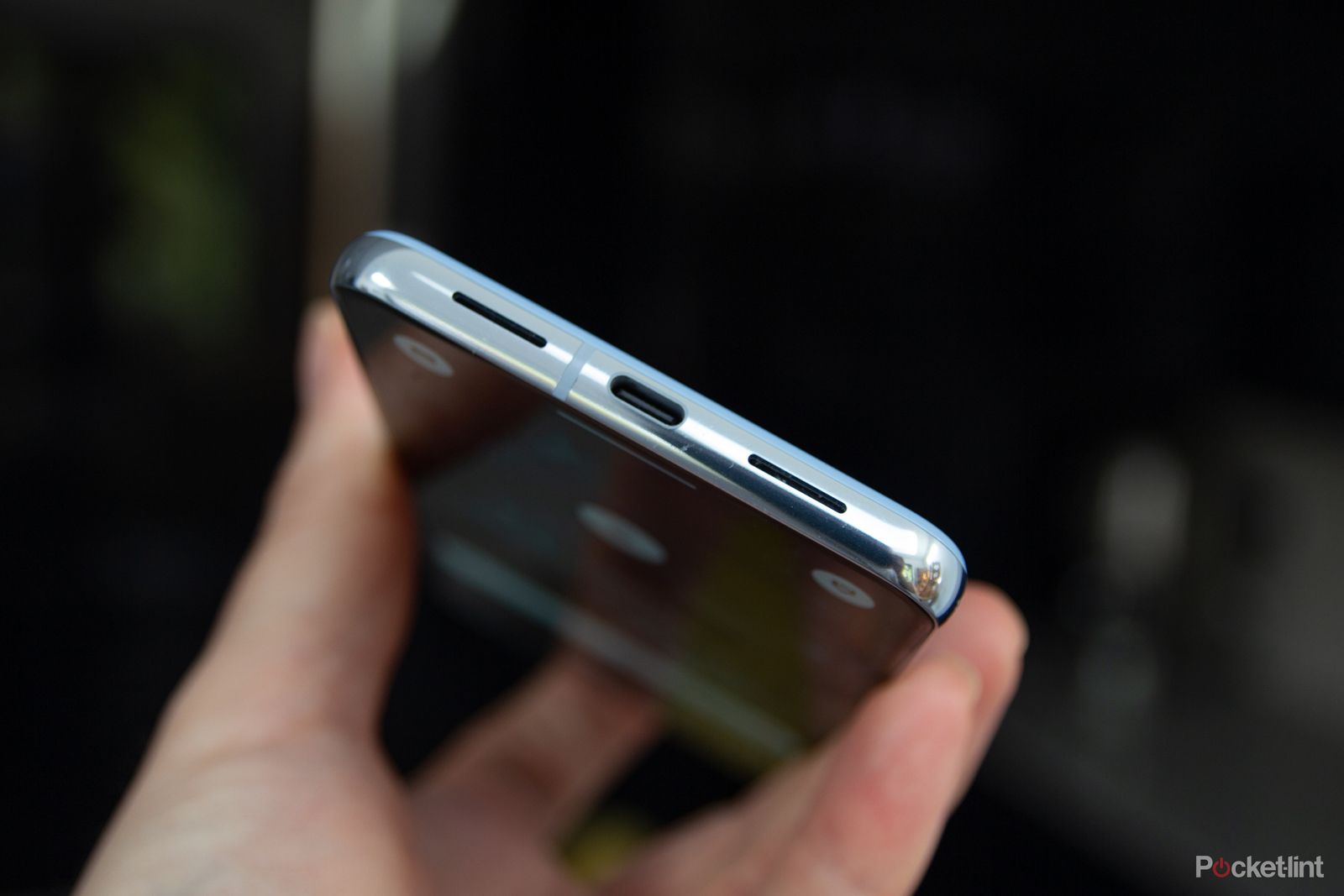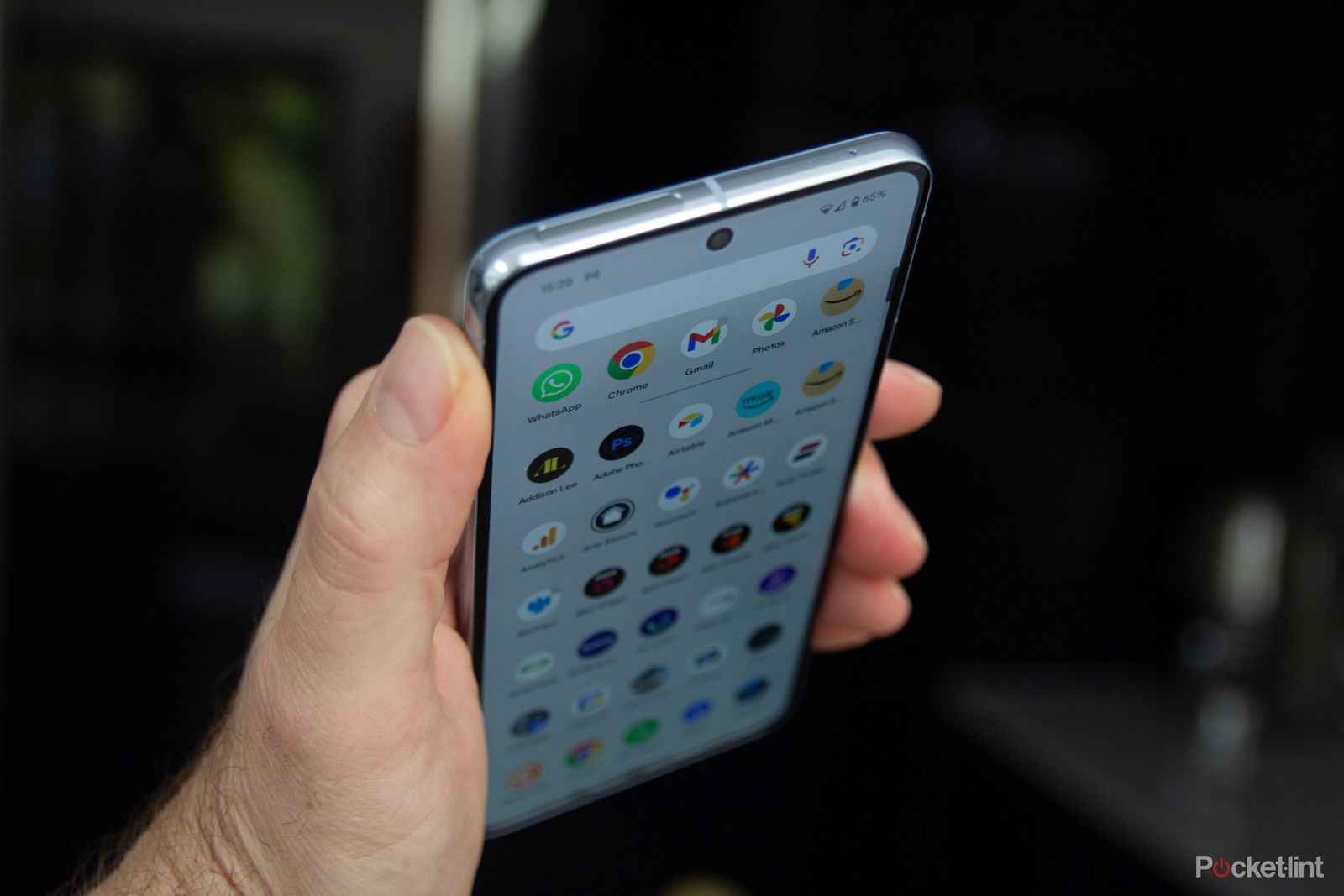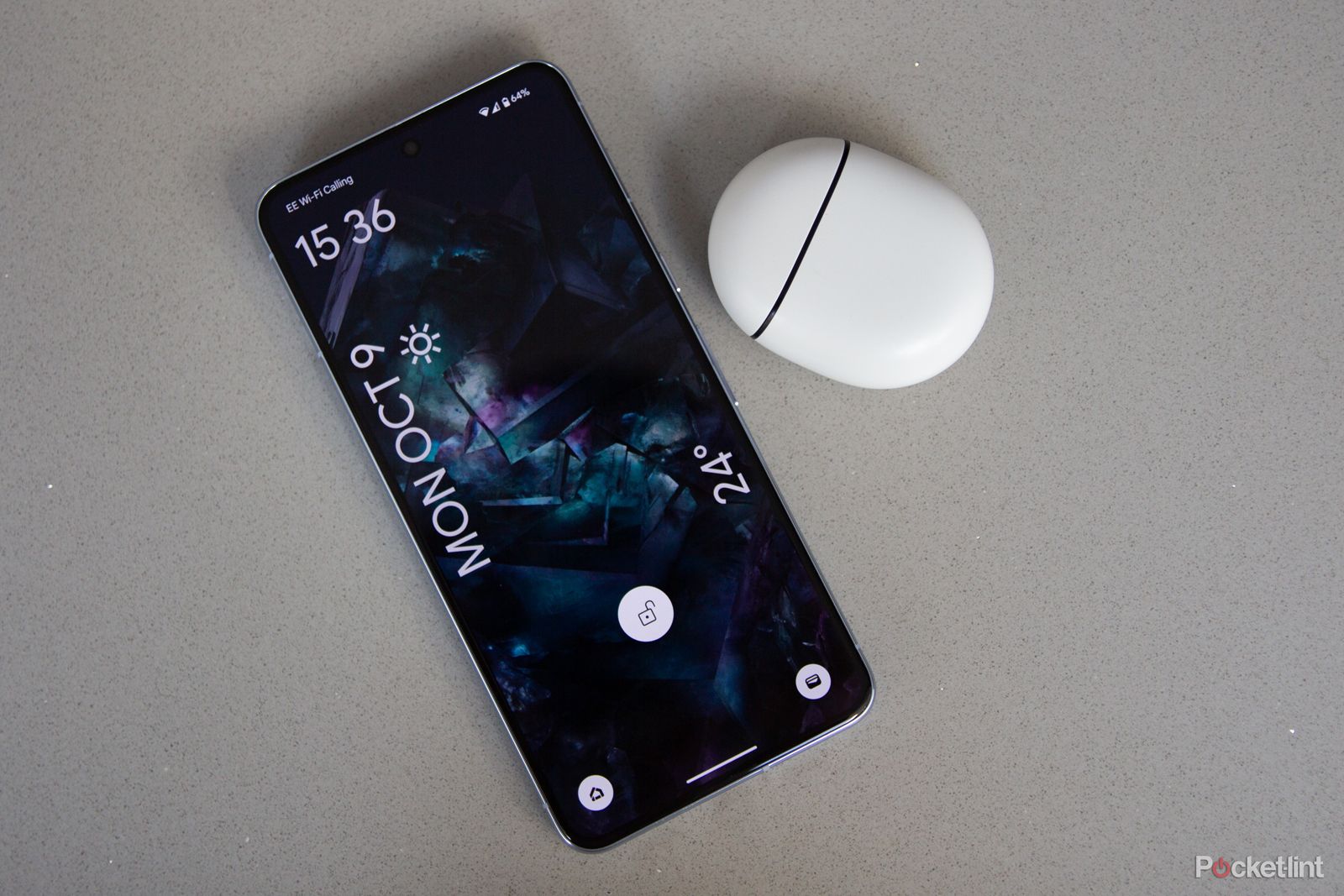The Pixel takes a lot of headlines but still commands a relatively small slice of the overall smartphone market. Dwarfed by the likes of Apple and Samsung, Google’s phones are slowly gaining popularity. The Pixel has defined itself on the camera experience, the freedom from bloatware and being front of the queue when it comes to software updates.
All that is true of the Pixel 8 Pro: there’s a new camera system (although it’s not as new as Google might suggest), the support for this phone has now extended to seven years, and once again, it’s a Google experience through and through. But is Pixel still a plucky upstart, or is this now the complete package?
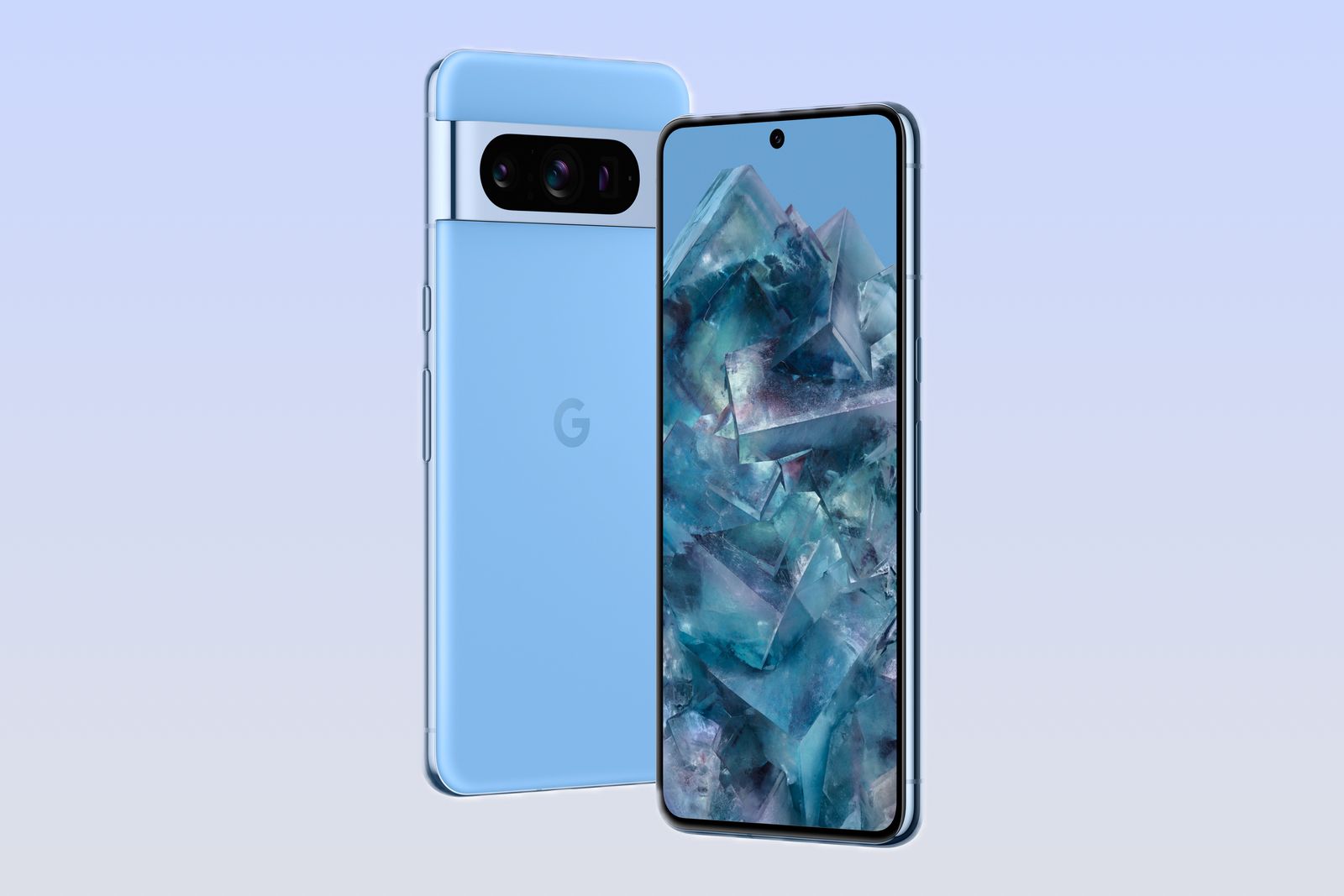
Nội dung chính
Google Pixel 8 Pro
Editor’s Choice
- Outstanding imaging offering
- 7-year commitment to software updates
- Wonderful display
- Battery life is nothing special
- Android 14 isn’t hugely different … yet
Pixel 8 Pro camera performance
I’m going to dive right into the camera experience to save you the scrolling. If you’re not convinced that this phone is worth your attention once you’ve reached the end of the camera section, then you can go off and read about the iPhone 15 Pro Max instead.
Google pitches the Pixel 8 Pro camera as all-new. It is, and it isn’t: there is still a triple camera system, with a 50-megapixel main sensor and a 48-megapixel telephoto sensor, but the lenses are different. There’s a wider aperture on the main camera, f/1.68, to let in more light – resulting in even better low-light photos – while the telephoto again has a wider aperture at f/2.8. That means more light, faster shutter speeds, and sharper telephoto images through the optical pathway (that’s before you get to any digital processing).
The ultrawide is completely new, moving to a 48-megapixel sensor and once again, Google has a wider aperture at f/1.95 for more light. So, the changes Google has made optically are about letting in more light. What Google is doing here is boosting the hardware to provide the best possible platform for what happens next – computational photography.
Google hasn’t hidden the fact that it’s using AI to boost images. The Pixel phones have been a testament to what AI can do – although it does raise the question of how real these photos actually are. I’ve tested the Pixel 8 Pro alongside the Pixel 7 Pro, and the results are pretty much the same in good lighting. There are some minor differences in tonality – my Pixel 8 Pro would produce slightly warmer images than the Pixel 7 Pro – but the photos look identical in many cases.
Pocket-lint
The wider aperture on the main camera means a shallower depth of field on photos where you’re close to the subject. That can lead to some intrusive background blurring; if you find that’s the case, you might want to move back and use a different lens to get a better image. You can see that in the burger above.
In low light – using Night Sight – the Pixel 8 Pro is better. It’s not hugely different to the 7 Pro, but in the same situation, the Pixel 8 Pro can shoot with a lower ISO, meaning less noise to be processed away and greater preservation of fine detail, especially in shadowed areas. Again, some of my test images are slightly warmer than they were from the Pixel 7 Pro.
The front camera is quite different: it now offers autofocus, and that means that it naturally blurs the background slightly, compared to the flatter image from the 7 Pro. I prefer the selfies out of the Pixel 8 Pro – and that’s before you get to the AI-driven Portrait modes. There’s more detail because of that focus, so it’s a general lift in performance overall.
Optically speaking, as a point-and-shoot camera, there aren’t huge changes here. I rated the Pixel 7 Pro as one of the best smartphone cameras of 2022. DxOMark agreed (but is yet to publish results for the Pixel 8 Pro), and the fact that the Pixel 8 Pro repeats that performance on day one puts it firmly on the path to being one of the best smartphone cameras of 2023. But that’s not all it can do.
I was initially concerned about the Pro Controls that were being introduced, but they’re actually very simple and a great bit of UI. There’s no “pro mode”; you can just open the controls and tweak the picture you take from any camera. It’s a breath of fresh air compared to some smartphones that have proper camera functions. It’s more honest and, as a result, easier to understand. You can also open controls on video, tweaking the white balance, for example, something that Google hasn’t always been great at and previously required a tap on the viewfinder to access (which could mess up your focus).
My personal highlight in Pro Control is focus peaking – this highlights areas that will focus on your shot so you can confirm what will be nice and sharp before you press the shutter button.
Diving into the realms of photo AI
But beyond this, there’s a load of magic taking place. It’s all AI and has nothing to do with the camera hardware because it happens in Google Photos. We saw Magic Eraser previously, but the new additions in the Pixel 8 Pro blow this out of the water. Magic Editor takes the concept of Magic Eraser up a step with much larger generative AI in-fill when removing or relocating objects. It’s the sort of thing that would take me some time in Photoshop, using the clone tool, matching surrounding details and so on. This happens in seconds.
You can change the tone of your images for Golden Hour, you can completely edit the sky to the extent of adding in a photorealistic sun, you can completely change the style of a photo you’ve taken – and you’re given three options as the AI comes up with different solutions. You can also move things around the frame. If the tool can identify an object, you can just select it and drag it to a different part of the image – with AI filling in the gaps left behind. It’s literally creating photos that never existed. Take a look through the gallery below for some samples – original, then AI tweaked by me in Magic Editor.
This also isn’t hardware dependent – a lot has been said about Tensor G3 having AI power, but it’s happening in the cloud for Magic Eraser. How do I know this? Because a photo needs to be backed up for it to work – and you need a connection to the internet.
Then we have Best Take. This does run on the device and is designed to help you get the perfect group photo. When you have a number of pictures with faces in, you can enter the Best Take tool, which will scan the photo and find faces from similar photos (photos that were part of the same group). Then, you’re offered the faces, so you can tap through each person as the face morphs through the different faces from each photo. The idea is that you can swap those faces around until everyone is smiling, everyone has their eyes open, and everything looks great. It works – there’s some chance you’ll get a bit of a weird edge here and there – but it’s also really creepy. And comically, it doesn’t have to be “best” either – you could make a gallery of jeering, double-chinned, awkwardly glancing caricatures, a veritable horror show of a group photo.
Pocket-lint
Ultimately, the Pixel 8 Pro sets itself up as not just a great camera but something much larger. Google is swiping aside the need for manual editing tools by pumping in AI – and not just to photos taken on this phone – you can apply these things to any photo in Google Photos. The result is something comprehensive for both shooting and editing with a casual ease. This isn’t a tool for photographers; it’s a photography studio for Gen Z, where you can tweak everything in seconds before sharing it on social media, all with AI holding your hand.
There’s more to come, too, with Video Night Sight – sure to be a game-changer – arriving via an update in December. Importantly, this isn’t about optics and apertures or any of that other photographic stuff; it’s about AI. No one else is close to this experience – not Apple, Samsung, or Huawei – but you can bet they will be running to catch up.
Google Pixel 8 Pro
- SoC
- Google Tensor G3
- Display
- 6.7-inch, Super Actua OLED, 2992 x 1344, 489ppi, 1-120Hz, up to 2400nits
- Battery
- 5050mAh, 30W fast charging, 12-18W wireless
- Operating System
- Android 14
- Camera (Rear, Front)
- 50MP f/1.68 main, 48MP f/1.95 ultra wide, 48MP f/2.8 telephoto, 10.5MP f/2.2 front
- Dimensions
- 162.6 x 76.5 x 8.8 mm, 213g
- IP Rating
- IP68
- RAM and Storage
- 12GB, 128GB/256GB/512GB/1TB
Familiar design and build
Google has stuck to its key design highlight with the Pixel 8 Pro, which is the camera bar across the back. Introduced on the Pixel 6, this has evolved slightly, grouping all the cameras together in this latest iteration, but hanging onto the visual identity that’s undeniably Pixel. The big change for the Pixel 8 Pro is that the display is now flat, with Google dropping the curves that the Pixel 7 Pro flaunted.
At the same time, the rear of the phone – finished in Gorilla Glass Victus 2 – is now matte, silky smooth to the touch and imparts a real sense of quality. The rear edges of the phone still curve into the frame, which is softly rounded rather than harshly squared like the old iPhone 14 Pro Max, and despite the loss of the curves to the edge of the display, I still find this a comfortable phone to hold. It’s big, sure, but there’s no real change in the dimensions or weight compared to the previous edition of this device.
In that there’s something iterative, the whole device closely resembles the model it replaces. That’s commonplace: it’s exactly what Apple does, and Samsung too, so it’s hard to criticise the lack of substantial change. The phone hangs on to the IP68 waterproofing, so it’s as well protected as it was before, but I’d still recommend a case for drop protection.
Oh that display
If there’s one area where you’ll really see the Pixel 8 Pro pop, it’s in the display. I’ve already mentioned that it’s flatter but the same overall size as the Pixel 7 Pro at 6.7 inches. It’s a slightly lower resolution, but it’s an LTPO OLED, meaning it offers adaptive refresh rates from 1-120Hz. This is one area which Google is keeping up with its rivals, aiming to optimise the display performance for the content you’re consuming.
But where it betters most rivals is in brightness. A 2,400 nits peak brightness is available on the Pixel 8 Pro, which makes a huge difference. It will cut through reflections in bright sunlight, and it’s glorious when you bump up the brightness when gaming. It’s not often that the Pixel trumps rivals on pure hardware – the Samsung Galaxy S23 Ultra peaks at 1,750 nits, the iPhone 15 Pro Max at 2,000 nits – and for me, this is the biggest hardware difference to the Pixel 7 Pro. Ultimately, the display is just more glorious.
High peak brightness has a disadvantage in that it can drain the battery faster. If you run the device with the brightness turned all the way up, it’s naturally not going to last as long as if you keep it notched down from top levels. I’ve found the auto brightness to strike a nice balance here – although I’ve found myself turning it up slightly to make the visuals in games pop a little more.
Hardware and performance
The Pixel 8 Pro runs on the Google Tensor G3, the third-generation hardware that Google designed itself. There’s a noticeable step-up from the Tensor G2; with both the Pixel 7 Pro and the Pixel 8 Pro on Android 14 side-by-side, I’ve found the Pixel 8 Pro to be just a little faster and smoother – and the thermal management seems to be better too, with less heat during charging, or intensive gaming. Again, that’s going to increase the overall performance of the device for the better.
Pocket-lint
Talking about thermals, there’s now a temperature sensor on the phone’s rear. Why? I don’t really know. You can measure the temperature of things using IR, but this isn’t a function I’ve ever really wanted in a phone. It’s certainly pretty rare, but I think it’s telling that Google is applying for FDA approval. This suggests that it wants certification to take body temperature with it. Temperature has been increasingly used by things like fitness trackers to measure changes during sports or for cycle tracking for women. That makes sense when you’re wearing a wearable device, but a phone will probably only be useful for checking if the kids have a fever, which could be useful for parents.
There’s an under-display fingerprint scanner on the Pixel 8 Pro, but it’s becoming increasingly irrelevant. Face Unlock was (re)introduced on Pixel 7, allowing you to access your phone with a glance at the front camera. This has been boosted on the Pixel 8 Pro, so it now unlocks apps that accept biometrics – like your banking app. It’s almost as convenient as Face ID on the iPhone and definitely a great improvement over the implementation on the Pixel 7 Pro.
Pocket-lint
What the Pixel 8 Pro isn’t, however, is a gaming phone. Although there’s power in place and games look glorious and run smoothly, there are no real native gaming controls to optimise the experience as you’d find on many rival devices. I put many hours into Call of Duty Mobile on the Pixel 8 Pro, and while it was fluid enough and looked great, a dedicated gaming phone will give you a better gaming experience overall.
The Pixel 7 Pro was never really known for stellar battery life, and from what I’ve seen on the Pixel 8 Pro, the new model won’t either. During the time I’ve been using the 8 Pro, I’ve got to the end of the day with the phone asking if I want power saving mode because I’m under 20 per cent remaining. I’m going to keep an eye on this over the coming months: I’m currently not blown away by battery life, but I’m also not concerned about it either.
The Pixel 8 Pro also doesn’t offer anything like the fast charging you’d get from the OnePlus 11 or Moto Edge 40 Pro, for example, but the 30W charging it does support isn’t too different to Apple or Samsung. There are two sides to this argument: fast charging is really convenient because you can’t boost your battery and be on your way in a pinchy. But the downside is that it decays your battery faster, so the cell won’t last as long. With Google pushing the sustainability message – and seven years of software updates for this device – having a battery that didn’t last two years wouldn’t help.
A software commitment
I’ve come out and said previously that I’m not that excited about Android 14. Compared to the feature-rich iOS 17, there’s a sense that little changes here from Android 13. Instead, the focus is on delivering seven years of OS and security updates, which is a feature that does beat Apple’s current offering. Whether the device will last that long is a separate argument, but it does show some serious commitment from Google when it comes to longevity.
Pocket-lint
So when you unpack your Pixel 8 Pro on day one, you’ll find that it’s very much like other Pixel devices. If you’re updating from the Pixel 7 Pro, you won’t see much of a change; the differences are minor. But you are spared the sort of duplication and pre-loads that you get with Samsung and other manufacturers – and there are the Pixel Drop updates to look forward to that will add new features in the future.
I’ve found the Pixel 8 Pro to be stable and smooth running, and despite wishing there were more new features, it’s certainly a great platform for Google’s ambitions around the camera. It’s perfectly capable as a device, even if there’s little new in the daily software experience.

Google Pixel 8 Pro
Editor’s Choice
- SoC
- Google Tensor G3
- Display
- 6.7-inch, Super Actua OLED, 2992 x 1344, 489ppi, 1-120Hz, up to 2400nits
- Battery
- 5050mAh, 30W fast charging, 12-18W wireless
- Operating System
- Android 14
- Camera (Rear, Front)
- 50MP f/1.68 main, 48MP f/1.95 ultra wide, 48MP f/2.8 telephoto, 10.5MP f/2.2 front
- Dimensions
- 162.6 x 76.5 x 8.8 mm, 213g
- IP Rating
- IP68
- RAM and Storage
- 12GB, 128GB/256GB/512GB/1TB
Verdict
Smartphone launches always focus on the camera, and Pixel has always been there as one of the best. But in the Pixel 8 Pro, we’re talking about something else. We’re talking about progression beyond photography and into creativity I’ve never experienced. It’s clear that this is down to years of work into computational photography, and while new device launches in the next couple of months will offer more power (probably) and perhaps more battery life, you can’t just conjure up a feature like Magic Editor.
The Pixel 8 Pro is a stellar smartphone: it’s the Pixel 7 Pro on steroids. As iterative as the design and software might be, Google didn’t try reinventing its flagship smartphone in 2023. Instead, it went and reinvented smartphone imaging.
Iphone Store – 2023-12-12 17:54:12 / www.pocket-lint.com
